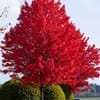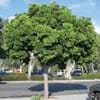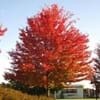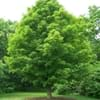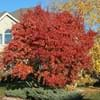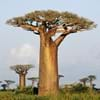What is
Life Span
Perennial
Perennial
Type
Tree
Flowering Plants, Spices
Origin
North America, United States, Northeastern United States, Mid-Atlantic United States, Southeastern United States, North-Central United States, Central United States, South-Central United States, Canada
Mediterranean, Southwest Asia
Types
Autumn Flame, October Brilliance, Tiliford
Star anise and more
Number of Varieties
Not Available
0
99+
Habitat
Forests, Wide range of ecological site
Thickets, Woods
USDA Hardiness Zone
3-9
4-9
AHS Heat Zone
9-1
9-4
Sunset Zone
A2, A3, 1a, 1b, 2a, 2b, 3a, 3b, 4, 5, 6, 7, 8, 9, 14, 15, 16, 17
H1, H2, 1a, 1b, 2a, 2b, 3a, 3b, 4, 5, 6, 7, 8, 9, 10, 11, 12, 13, 14, 15, 16, 17, 18, 19, 20, 21, 22, 23, 24
Habit
Oval or Rounded
Upright/Erect
Information
Plant Size
Minimum Height
1,220.00 cm
33
2.50 cm
99+
Minimum Width
1,220.00 cm
14
1.25 cm
99+
Plant Color
Flower Color
Red
White
Flower Color Modifier
Bicolor
Not Available
Fruit Color
Red, Green, Brown
Gray Green, Tan
Leaf Color in Spring
Light Green
Green
Leaf Color in Summer
Green, Dark Green
Green
Leaf Color in Fall
Yellow, Red, Orange, Yellow green, Gold, Dark Red, Orange Red
Green
Leaf Color in Winter
Not Available
Green
Shape
Leaf Shape
Maple shaped
Lobed
Thorns
No
No
Season
Plant Season
Spring, Summer, Fall
Summer
Growing Conditions
Sunlight
Full Sun, Partial Sun
Bright direct sunlight
Growth Rate
Medium
Fast
Type of Soil
Clay, Loam, Sand
Loamy, Sandy, Well drained
The pH of Soil
Acidic, Neutral, Alkaline
Neutral, Slightly Acidic
Soil Drainage
Average
Well drained
Bloom Time
Early Spring, Spring
Late Summer, Summer
Repeat Bloomer
No
No
Tolerances
Wet Site, Soil Compaction
Soil Compaction
Care
Where to Plant?
Ground
Ground
How to Plant?
Seedlings, Vegetative Reproduction
Seedlings
Plant Maintenance
Medium
Medium
Watering Plants
Watering Requirements
Water Deeply, Water when top layer of soil becomes dry
Allow soil to be completely dry in between waterings, Medium, Water twice a day in the initial period
In Summer
Lots of watering
Lots of watering
In Spring
Moderate
Moderate
In Winter
Average Water
Average Water
Soil
Soil pH
Acidic, Neutral, Alkaline
Neutral, Slightly Acidic
Soil Type
Clay, Loam, Sand
Loamy, Sandy, Well drained
Soil Drainage Capacity
Average
Well drained
Sun Exposure
Full Sun, Partial Sun
Bright direct sunlight
Pruning
Remove dead branches, Remove dead leaves
Prune regularly
Fertilizers
General garden fertilizer, No need to fertilize every year
All-Purpose Liquid Fertilizer
Pests and Diseases
Anthracnose, Bleeding canker, Decline, Fomes root rot, Ganoderma root rot, Laetiporus root rot, Leaf spot, Powdery mildew, Tar spot, Verticillium Wilt
Alternaria leaf blight, Aphids, Cutworms, Downy mildew, Powdery mildew, Rust
Plant Tolerance
Soil Compaction, Wet Site
Drought
Facts
Flowers
Insignificant
Yes
Flower Petal Number
Single
Single
Fruits
Showy Fruit
No
No
Edible Fruit
No
Yes
Fragrance
Fragrant Flower
No
Yes
Fragrant Fruit
No
Yes
Fragrant Leaf
No
Yes
Fragrant Bark/Stem
No
Yes
Showy Foliage
Yes
No
Showy Bark
Yes
No
Foliage Texture
Medium
Fine
Foliage Sheen
Matte
Matte
Evergreen
No
No
Invasive
No
No
Self-Sowing
Yes
Yes
Attracts
Not Available
Butterflies
Allergy
breathing problems, Eczema, flushing of face, Hives, Low blood pressure, Oral cavity, Rapid Heartbeat, Runny nose, Watery eyes
Respiratory problems, Skin irritation, Skin rash
Benefits
Uses
Aesthetic Uses
Showy Purposes
Not Available
Beauty Benefits
Not Available
Not Available
Edible Uses
Yes
Yes
Environmental Uses
Air purification, Wildlife
Air purification
Plant Benefits
Medicinal Uses
Not Available
Asthma, constipation, Cough
Part of Plant Used
Whole plant
Flowers, Leaves
Other Uses
Edible syrup, Used as Ornamental plant
Oil is used for aromatherapy, Oil is used in perfume, soaps, creams, etc., Used for flavoring in Liquors, dairy products, gelatins,puddings, meats, candies, etc., Used for fragrance, Used as a spice
Used As Indoor Plant
Yes
No
Used As Outdoor Plant
Yes
Yes
Garden Design
Feature Plant, Shade Trees, Street Trees
Edging, Feature Plant
Scientific Name
Botanical Name
ACER rubrum
Pimpinella anisum
Common Name
Northern Red Maple, Red Maple
Anise
In Hindi
लाल मेपल के पेड़
सौंफ़ का पौध
In German
Red Maple Tree
Anis
In French
Red Maple Tree
Anis
In Spanish
Árbol de arce rojo
Anís
In Greek
Red Maple Tree
γλυκάνισο
In Portuguese
Árvore de bordo vermelho
anis
In Polish
Red Maple Tree
Anyż
In Latin
Rubrum Maple ligno
Anethum
Classification
Kingdom
Plantae
Plantae
Phylum
Magnoliophyta
Magnoliophyta
Class
Magnoliopsida
Magnoliopsida
Order
Sapindales
Apiales
Family
Aceraceae
Apiaceae
Genus
Acer
Pimpinella
Clade
Angiosperms, Eudicots, Rosids
Angiosperms, Asterids, Eudicots
Tribe
Not Available
Not Available
Subfamily
Not Available
Not Available
Number of Species
Not Available
1
99+
|
||
|
||
|


